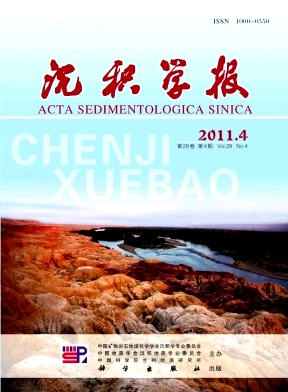Forming Mechanism of Secondary Porosity in Tertiary Reservoirs in Panyu Low Uplift and North Slope of Baiyun Sag
- Received Date: 1900-01-01
- Rev Recd Date: 1900-01-01
- Publish Date: 2011-08-10
-
Key words:
- Baiyun Sag /
- secondary pores /
- organic acid /
- inclusion /
- migration pathway system /
- highquality reservoir
Abstract: As the world's deep water oil and gas exploration continue to strengthen, the deepwater basin has increasingly become the new areas to gain growth in oil and gas reserves. The deepsea oil and gas exploration has developed the inevitable challenges. Therefore, to make related research about the deep exploration and development in particular characteristic of the reservoir is a necessary requirement to find deep water oil and gas and also the direction of ocean exploration. Pearl River Mouth Basin is a major basin in China's offshore oil and gas basins with low level of exploration and the lacking comprehensive research on the variation law and influencing factors of reservoir properties. Deep reservoir with high porosity has been increasingly developed the concern problem with oil exploration performing to deep zone by petroleum geologists. The formation mechanism and controlling factors of the secondary porosity are reasonably explained or not, which directly impacts on the establishment of oil and gas basin clastic reservoir quality prediction model and serious impact on the objective evaluation of the reservoir. In this paper, the constraints of the factors of the secondary porosity in the study area are discussed systemically by isotope geochemistry, organic geochemistry methods combined with sedimentology. The study area contains a large number of grains and grain dissolution pore, according to sandstone sheet, cast thin sections, scanning electron microscopy analysis. Based on reservoir property data, two secondary porosity zones can be found in the Tertiary reservoirs, Baiyun Sag, mainly in the 2 750~3 800 m and 3 500~4 600 m. Mineral grains and carbonate cement are dissolved forming large of intergranular dissolution pores and dissolution pores. By isotope tracing method, it is found that the formation of secondary porosity is caused by the organic acid. Organic maturity and acidic water in which CO2 is released by decarboxylation of organic matter in the process of diagenesis were the main reason. The feldspar particles, containing feldspar volcanic debris, early carbonate cements and fossils in the reservoir are dissolved by organic acid. The distribution of oxygen and carbon isotope of clastic rocks in the study area is that the value of δ13C changes in between 11.8 ‰ and 3.4 ‰ and δ18O value changes in between 17.8 ‰ and 2.4 ‰. If 13C in carbonate cements is only from the depositional pore water, δ13C value can not be so low. So, organic acids from kerogen decarboxylation must join in the process of the formation carbonate cements in the deep burial. Affecting the secondary porosity of the geological factors include the distribution and types of hydrocarbon source rocks, sandbodies distribution in the sedimentary facies and sandstone types, fracture resulting from tectonic activity. In Pearl River Mouth Basin, there are 4 sets of hydrocarbon source rocks including the Eocene Wenchang Formation, the Eocene oligocene Enping Formation, upperthe Oligocene Zhuhai Formation and under the Miocene Zhujiang Formation. As the types of organic matter are mainly Ⅰand Ⅱin these 4 sets of hydrocarbon source rocks, the research area's hydrocarbon source rocks are suitable to produce the acid and have strong ability to produce the sour fluid. Wenchang source rocks in which the value of Ro is up to 3.0% has been in mature or even over mature. Enping source rocks has dnter the mature stage, Ro=1.0% to 1.5%. The Ro value of Zhuhai source rocks is 0.43% ~ 0.53%. The main hydrocarbon source rocks enter the stage of producing sour fluid, which can provide the massive acidic fluid for dissolving the oil gas reservoir. The reservoir clastic rocks are main the silicarenite and the debris silicarenite which have the high constitute and structure maturity. Therefore, it is advantageous that the organic acid enters the reservoir to form the secondary pores. The development of faults and sandstone layer which act as the bridge between source rocks and reservoir to make a steady stream of organic acids migrating from the lower strata to shallow reservoirs in the Panyu lower uplift Baiyun Sag North Slope. In addition, secondary porosity is also controlled by the matching hydrocarbon source rock maturity time with migration pathway system which includes faults, sand body and ancient structural ridge. When the organic acids migrate into the study area, there are the active faults and sands which can provide the longdistance lateral migration of oil and gas. Formation of secondary porosity is a systematically geological processes. Its formation and preservation are relevant to many aspects such as basin heat flow, tectonic evolution, sedimentation, diagenesis, fluid nature, and fluid migration and so on. After comprehensively analyzing various geological factors, the model which describes the organic acids forming secondary porosity can be summed up as "production, transportation, matching, and dissolution." Only the geological factors matching with each other can the secondary porosity be produced. These cognitions have good guidance for predicting highquality reservoir in the studied area.
| Citation: | HAO Le-wei. Forming Mechanism of Secondary Porosity in Tertiary Reservoirs in Panyu Low Uplift and North Slope of Baiyun Sag[J]. Acta Sedimentologica Sinica, 2011, 29(4): 734-743. |






 DownLoad:
DownLoad: